Get a Quote
Home » Insurance for Classic & Collector Cars » Muscle Car Insurance » Corvette Car Insurance
Classic Auto Insurance – Not Your Ordinary Car Insurance Company
You have always wanted a Corvette for as long as you could remember. No other car would do. Now that you are a proud owner, nothing is too good for your “Vette”. So don’t settle for average, run-of-the-mill car insurance.
The Chevy Corvette Takes Center Stage
In 1953 GM presented a “futuristic” dream car prototype at the Motorama in New York City. The Chevrolet Corvette captures the imaginations with car lovers and a legend was born. Today the Corvette is America’s Sports Car and for many Corvette owners it is a lifelong passion. Classic Auto Insurance realizes your love for your Vette runs deep and we want to help you protect it.
No “One Size Fits All” Policies Here
Buying a Corvette (whether vintage or new) has been your goal. With this milestone, you need to stop and think how best to protect your dream car. Classic Auto Insurance can help you find the perfect policy. There are no “one size fits all” policies here. We offer customized Corvette Insurance plans that are tailored to each individual customer and their vehicle.
Agreed Value Not Stated Value
At Classic Auto Insurance we offer you Agreed Value coverage on your Corvette. Unlike other insurance companies who want to tell you what your car is worth, we will work with you to determine the real value of your car and write a policy based on that price. So if life throws you a curve ball and your car is totaled in a covered loss, you will receive the exact agreed upon value on your policy minus your deductible.
Classic Auto Insurance – Offering Peace of Mind at Affordable Rates
In addition to Agreed Value, our “Inflation Guard” provides an automatic increase in Vehicle Coverage every quarter, throughout the policy term, so you don’t have to worry your Corvette may be underinsured. This is just another way we offer peace of mind to Classic Auto customers.
Flexible Plans and Rollover Miles Keep You Rolling Along
Choose from one of our three mileage plans -1,000, 3,000, or 6,000 miles- to tailor your Corvette Insurance policy to your needs. For example, say you plan to attend a number of car shows this year but only manage to make it to one. No problem. Classic Auto Insurance offers rollover miles from one year’s policy to the next. We understand plans change and we don’t feel you should lose miles just because you didn’t use them.
Roadside Assistance – Only a Call Away
The Corvette is built for speed so sitting, broken down on the side of the road is not your idea of fun. Never fear! Your Classic Auto Insurance policy includes nationwide roadside assistance with guaranteed flatbed towing. We are just a call away.
Classic Auto – The Perfect Coverage for Less
Personal service is what we at Classic Auto Insurance pride ourselves in. We love Corvettes and know how much time and effort goes into caring for them. That is why we assist our customers in finding the perfect policy for their individual needs. Let one of our friendly representatives answer all your questions. Give us a call today at 888-901-1337 for a free, instant quote. Let us take the worry out of protecting your Corvette so you can keep on “vetting”!
Generations of Classic Corvettes presented by Mid America Motorworks
C1 Corvette
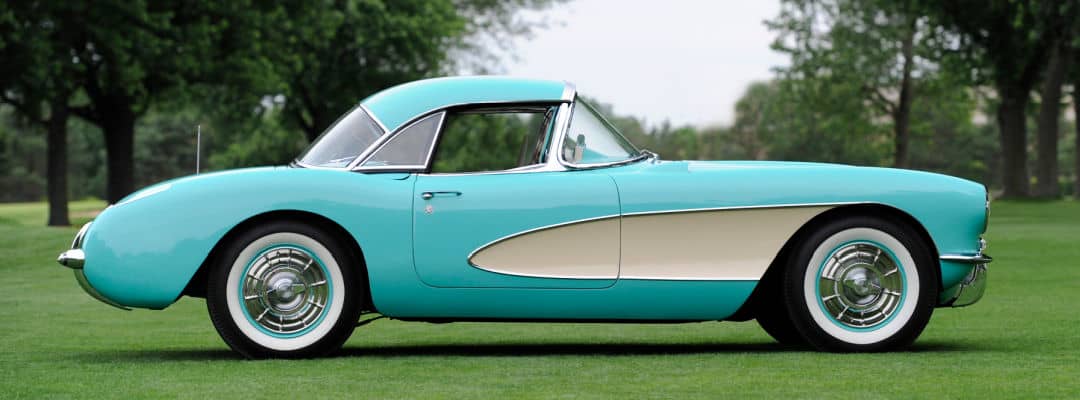 January 17, 1953, the Corvette makes its world debut as a concept vehicle at the General Motors Autorama in New York City. The Corvette received rave reviews, and the first 300 Corvettes rolled off the assembly line in Flint, Michigan, the same year. While the Corvette had sportscar looks, the ’53 Corvette was powered by a blue flame six producing 150bhp, the Corvette was a sports car in name only. 1954 would see more of the same and almost an early death of the model by stagnating sales – 3,640 models, a 12X production increase.
January 17, 1953, the Corvette makes its world debut as a concept vehicle at the General Motors Autorama in New York City. The Corvette received rave reviews, and the first 300 Corvettes rolled off the assembly line in Flint, Michigan, the same year. While the Corvette had sportscar looks, the ’53 Corvette was powered by a blue flame six producing 150bhp, the Corvette was a sports car in name only. 1954 would see more of the same and almost an early death of the model by stagnating sales – 3,640 models, a 12X production increase.
By 1955 Zora Arkus-Duntov, widely regarded as the Father of the Corvette, stepped into the Chief Engineer role at Corvette and produced the first Corvette with a V8. 1957 saw Corvette reach two automotive milestones: Corvette had reached the famous mark of 283 horsepower out of a 283 cubic inch motor, a 1:1 ratio. Secondly, Corvette produced a fuel-injected model available to the public! 1958 saw the C1 Corvette receive its first major styling change with dual headlights that would remain with the car until its final year of production in 1962.
By 1962, the Corvette had almost a decade of established credibility with the 283 V8, solid axle driveline, and similar-shaped Corvettes. Featuring an all-new 327 cubic inch V8, the C1 would wrap up production by leading to some of the most iconic Corvettes ever.
C2 Corvette
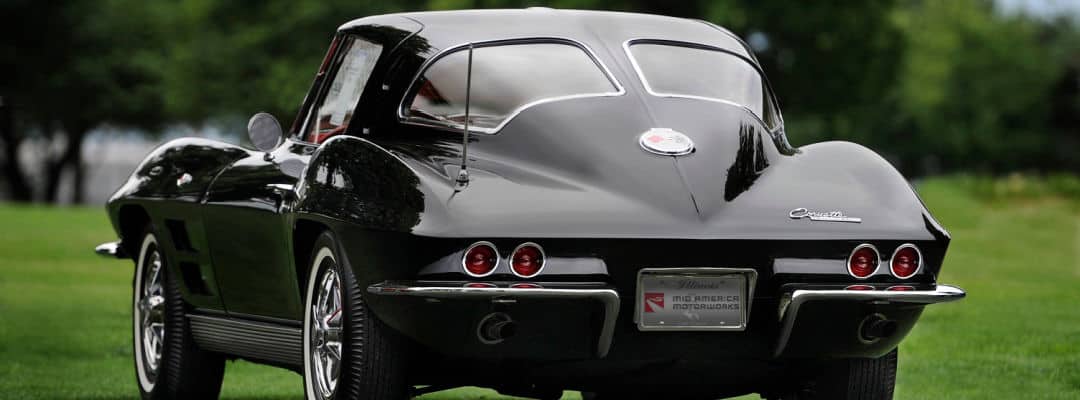 Perhaps the most iconic Corvette generation of all time. Zora continued to push the Corvette in a more race/sports car direction to match its European counterparts. While engineering progressed, the ’63 was given all new designs thanks partly to Peter Brock’s early concepts and Larry Shinoda expanding those designs into the final iconic 1963 split window Corvette.
Perhaps the most iconic Corvette generation of all time. Zora continued to push the Corvette in a more race/sports car direction to match its European counterparts. While engineering progressed, the ’63 was given all new designs thanks partly to Peter Brock’s early concepts and Larry Shinoda expanding those designs into the final iconic 1963 split window Corvette.
1964 saw the deletion of the coupe’s iconic split window, something Zora found to be distracting, especially when racing! By 1965, Corvette was ready to introduce the world to its first big block, the 396 cubic inch motor – derived from the now famous mystery motor.
By 1966, the 396 was bored out to the famous 427 cubic inches. Skipping ahead to 1967 and 1963 is perhaps one of the most iconic cars of all time. The fire-spitting 427 corvettes could be ordered with an output of up to 435 horsepower. If you knew Zora or raced Corvettes, the legendary L-88 was available, and only 20 would be produced. With an “advertised” rate of only 430 horsepower but probably closer to 550 horsepower – the C2 ended with 22,940 units built.
C3 Corvette
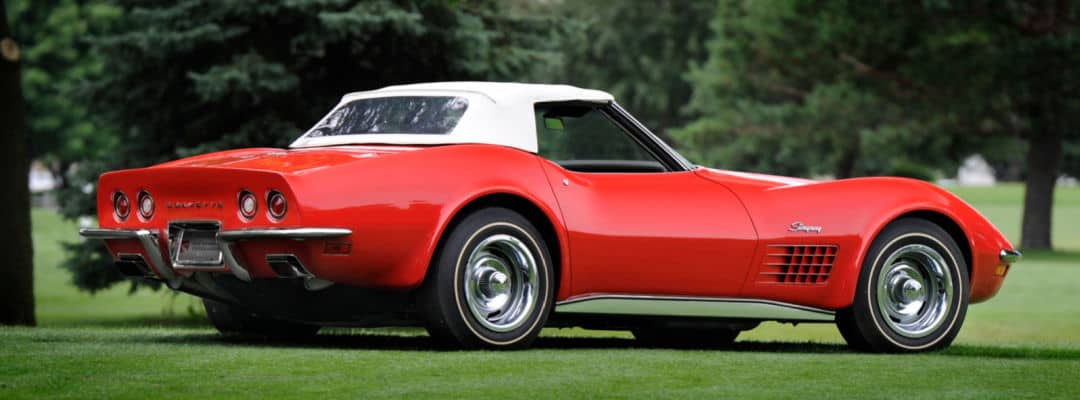 Produced from 1968-1982, the C3 Corvette is perhaps the most varied Corvette of all generations. The longest-tenured generation of Corvettes, the C3 generation, had something to offer for all. 1968 introduced the world to coke bottle fenders and shark-like design ques.
Produced from 1968-1982, the C3 Corvette is perhaps the most varied Corvette of all generations. The longest-tenured generation of Corvettes, the C3 generation, had something to offer for all. 1968 introduced the world to coke bottle fenders and shark-like design ques.
The last year of the carryover 327 cubic inch motor was juxtaposed with the earth-shaking L-88 carried over from the previous generation. 1969 saw Corvette introduce the 350 cubic inch/5.7-liter configuration that would solider on in the Corvette for generations to come.
By 1973, the Corvette was starting to transform, losing its chrome bumpers and a significant cut in power due to federal government regulations. The end of 1975 saw Corvette no longer offered in a convertible, a first since 1953, and the year before saw the last big block-powered Corvettes.
By the late ’70s, the Corvette had greatly varied in both looks and power plants offered in the early C3. No longer considered a Sting Ray, 1982 would be the last of the C3s, with a revolutionary Corvette waiting to take up the mantle.
C4 Corvette
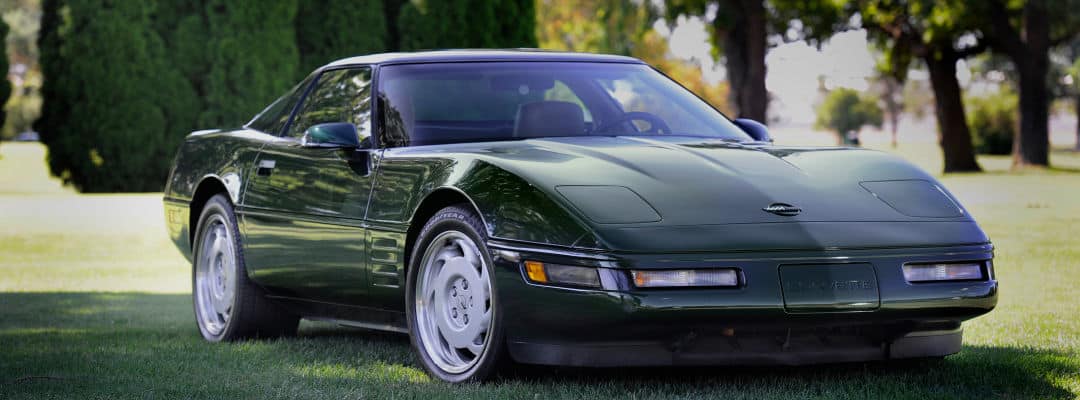 David McLellan took over the Corvette Chief Engineer post vacated by Zora in 1975. By the early 80s, it was clear that Corvette needed a totally clean sheet design to introduce the fourth generation Corvette.
David McLellan took over the Corvette Chief Engineer post vacated by Zora in 1975. By the early 80s, it was clear that Corvette needed a totally clean sheet design to introduce the fourth generation Corvette.
The C4 would skip the model year 1983 and introduce the C4 to the public in 1984. Like the previous generation, the first year of production would utilize a previous generation motor but offer a revolutionary chassis and interior beyond its time, one that put a focus on the driver and data they could retrieve.
From 1985-1988 the C4 would see modest interior, exterior, and powerplant changes. 1989 saw the Corvette ditch the now infamous 4+3 gearbox for a German-soured ZF six-speed manual. 1990 would see several styling changes to coincide with introduction of the LT5-powered ZR-1 Corvette. The LT5 would feature a nontraditional Corvette motor with four cams and 32 valves, which would be in production until 1995.
The ZR-1 was not the only high-output option available. The B2K option available from 1987-1991 would feature aftermarket tuner Callaway engine upgrades as a factory option. By 1996 the C4 featured the LT1 power plant on offer since 1991 and a one-year-only high horsepower motor, the LT4, available only with manually equipped Corvettes.
C5 Corvette
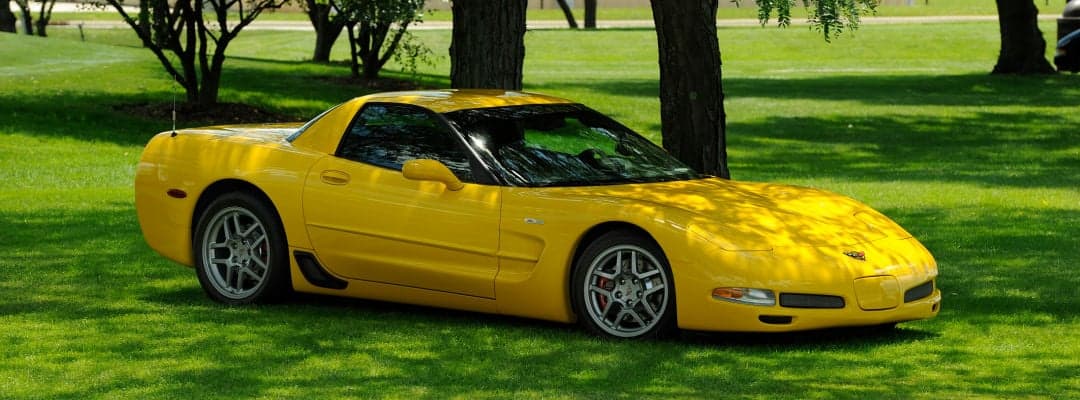 Unlike previous generations, the C5 was introduced with a powerplant designed specifically for this model. The LS1 would initially generate 345 horsepower with a bump to 350 for the model year 2000 and beyond.
Unlike previous generations, the C5 was introduced with a powerplant designed specifically for this model. The LS1 would initially generate 345 horsepower with a bump to 350 for the model year 2000 and beyond.
Fast forward to today, the LS powerplant that debuted in the 1997 Corvette is perhaps one of the most modified, trusted, and capable powerplants ever built in the history of automobiles. 1998 saw Corvette roll out the convertible version of the C5.
From 1997-2004, the coupe and convertible models would only see minor tweaks from production to the end. The high horsepower options within the C5 model range came in 2001 with the introduction of the Z06, an RPO not seen since 1963. The LS1 was renamed LS6 and was massaged to a power increase of 35 to 385 in 2001 and an additional 20 for model years 2002-2004.
The Z06 was built upon the Fixed Roof Coupe (FRC) design, available only in 1999/2000, and turned into an RPO package for model years 2001-2004. The Z06 featured suspension changes oriented more toward the track.
C6 Corvette
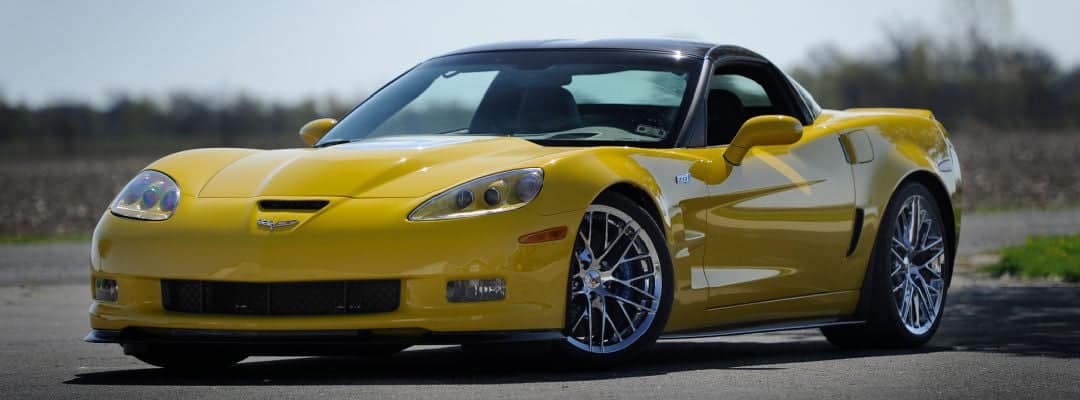 Debuting in 2005, the C6 was largely considered an evolution of the C5. With the success of the LS1 from the 5th generation, Corvette rolled out the LS2 with an increased displacement from 5.7 to 6.0 liters.
Debuting in 2005, the C6 was largely considered an evolution of the C5. With the success of the LS1 from the 5th generation, Corvette rolled out the LS2 with an increased displacement from 5.7 to 6.0 liters.
Corvette’s base model would see a further displacement increase in 2008-2013 with the LS3 at 6.2 liters. Just like the C5, the C6 received its own RPO Z06 model. The C6 would bring back the famous 427 cubic motor of its C2 and C3 brethren, although in a small block format. Producing 505 horsepower, the Z06 was Corvettes track focused entry. If 505 horsepower weren’t enough, the ZR1 model would debut in 2009, featuring the LS9.
The LS9 produced 638 horsepower and was capable of 200+ MPH. Borrowing from the Famed 1963 and 1996 Grand Sport nameplate, Corvette rolled out the Grand Sport model in 2010 with Z06 attributes, minus the famed LS7 powerplant.
The Grand Sport, Z06, ZR1, and base model would remain virtually unchanged throughout the later years of production. Because of the great recession in 2008, Corvette production numbers dipped from 26,728 units in 2005 to just 10,914 produced in 2013 – a production number not seen since 1960.
C7 Corvette
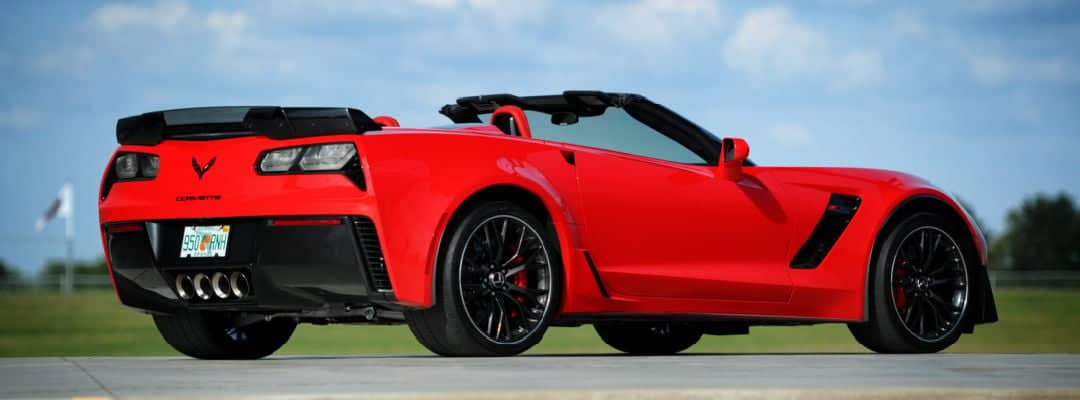 The C7 would be produced from 2014-2019, and the Stingray nameplate was back with the seventh generation. From production lows in 2013, the 2014 C7 would see sales skyrocket to 37,288 units.
The C7 would be produced from 2014-2019, and the Stingray nameplate was back with the seventh generation. From production lows in 2013, the 2014 C7 would see sales skyrocket to 37,288 units.
The LT1 powerplant, a name not used since the C4 generation, would be an upgraded LS3 with direct injection, variable valve timing, and cylinder deactivation. Generating 455 horsepower, the LT1 would remain relatively unchanged during production. The previous generation ZR1 and Z06 used aluminum instead of steel for the chassis – the C7 would make aluminum standard across all model frames.
Like prior generations, the C7 Z06 would debut in 2015 with 650 horsepower and enough power to reach 185MPH. The Z06 would get even more track-focused than the RPO Z07. The Grand Sport model would again take the Z06 model attributes and replace the motor with a standard LT1.
The ZR1 would be a one-year-only model in 2019 with 755 horsepower. The ZTK-equipped ZR1 would be the ultimate track machine featuring aero and brake components specific to the one-year-only model.
C8 Corvette
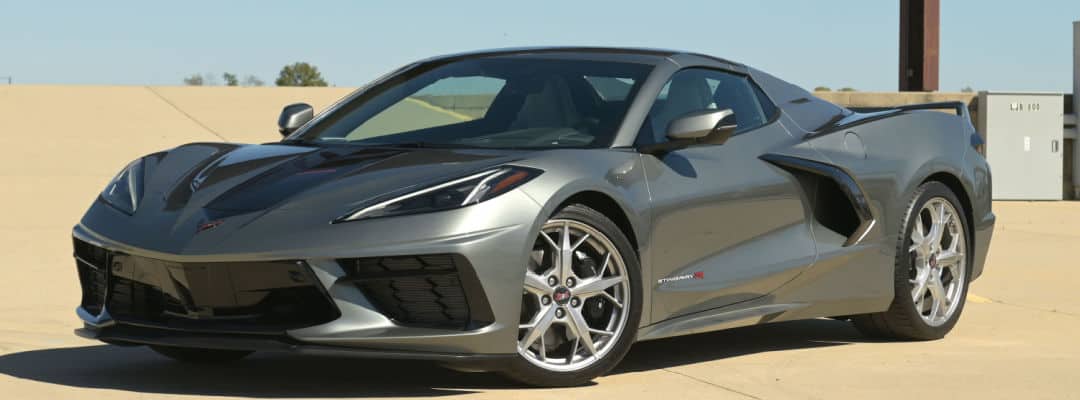 Corvette created a brand-changing model in 2020, the C8 Corvette. The traditional method of a V8, front-engine, rear-wheel drive Corvette that had been deployed for 60+ years was scraped. The mid-engine variant of Zora’s dream from the beginning of Corvette was finally put into production.
Corvette created a brand-changing model in 2020, the C8 Corvette. The traditional method of a V8, front-engine, rear-wheel drive Corvette that had been deployed for 60+ years was scraped. The mid-engine variant of Zora’s dream from the beginning of Corvette was finally put into production.
With almost no direct lineage to previous Corvette with respect to engine, transmission, chassis, etc. The C8 has truly aimed at a new generation of Corvette buyers and sportscar buyers alike. The mid-mounted LT2 engine produced 495 horsepower in its base model trim. In 2023, the Z06 was introduced.
Unlike the base model, the Z06 received a power plant designed especially for this track-focused car. The LT6 is equipped with a 5.5-liter flat-plane crank motor that sounds more like a certain Italian-based manufacturer than its traditional thundering big bored V8’S.
In winter 2023, Corvette announced it was building the E-Ray, an AWD mild hybrid Corvette, both firsts in the illustrious Corvette history. Based on previous generations, Corvette fans can expect a ZR1 variant and possibly a ZORA model that would generate close to 1,000 horsepower.
About Mid America Motorworks
 Mid America Motorworks, based in Effingham, IL, is a renowned aftermarket supplier and manufacturer of parts and accessories for Chevrolet Corvettes and Air Cooled Volkswagens. Every year, Mid America Motorworks opens its doors to thousands of Corvette and Volkswagen fanatics at the annual ‘Corvette Funfest’ in September and ‘Funfest for Air Cooled VWs’ in June – two immensely popular events that attract visitors from across the country.
Mid America Motorworks, based in Effingham, IL, is a renowned aftermarket supplier and manufacturer of parts and accessories for Chevrolet Corvettes and Air Cooled Volkswagens. Every year, Mid America Motorworks opens its doors to thousands of Corvette and Volkswagen fanatics at the annual ‘Corvette Funfest’ in September and ‘Funfest for Air Cooled VWs’ in June – two immensely popular events that attract visitors from across the country.
Not only is Mid America Motorworks a provider of aftermarket parts and accessories for Corvettes and Air Cooled Volkswagens – it is also the proud home of ‘EffingHAM Music Fest’, an event that sees some of the biggest names in music performing at the Funfest Amphitheater every year. Moreover, visitors to Mid America Motorworks can explore the vast MY Garage Museum and Retail Store, take advantage of a full-service mail order catalog, and join in on one or more of the ever-growing list of annual events that make this location an increasingly recognized entertainment destination.
Classic Auto Insurance is proud to partner with Mid America Motorworks to support Corvette and VW car collectors.
